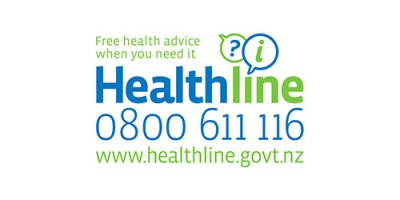About Te Whatu Ora - Nelson Marlborough
About Te Whatu Ora - Health New Zealand:
On 1 July 2022, Te Whatu Ora – Health New Zealand and Te Aka Whai Ora – Māori Health Authority became Aotearoa’s new national health authorities and Nelson Marlborough District Health Board (trading as Nelson Marlborough Health) as an entity was disestablished and became part of Te Whatu Ora – Health New Zealand.
Te Whatu Ora and Te Aka Whai Ora have their own governance structures, therefore DHB Boards and Advisory Committees ceased to operate on 30 June 2022.
Te Whatu Ora and Te Aka Whai Ora are committed to delivering a health system that is simpler and more coordinated, allowing for better and more consistent care to support all New Zealanders to live longer and have the best possible quality of life.
For information about the governance of Te Whatu Ora – Health New Zealand and Te Aka Whai Ora – Māori Health Authority please visit their websites:
If you have a specific question about health services in Nelson Marlborough, please email [email protected]
About Te Pae Tata - the Interim New Zealand Health Plan
Te Pae Tata has been developed to outline what Te What Ora will do differently over the next two years to build the foundations of a sustainable and affordable, unified health system to better serve our communities.
As an interim, two-year plan, Te Pae Tata is focused on ensuring the health system continues to provide care to New Zealanders, while we start to implement the improvements in the way services are delivered and work toward the first full New Zealand Health Plan.
Our development of the first full plan, for 2024-2027, will begin shortly, and be comprehensive and widely consulted with communities.
If you have any questions or would like to know more about Te Pae Tata | Interim New Zealand Health Plan, please get in touch with us at [email protected]
Click here to read Te Pae Tata
About Nelson Marlborough:
-
We are the main funder and provider of health services in the Nelson, Tasman and Marlborough regions
-
We promote our population’s health and wellbeing
-
We serve nearly 160,000 people
-
We employ more people than any other organisation in our region – about 2800 people
-
We're comprised of two hospitals, two public health services and many community services.
Our vision
All people live well, get well, and stay well. Kaiao te tini, ka ora te mano, ka noho ora te nuinga.
Our mission
Working with the people of our community to promote, encourage and enable their health, well-being and independence. Kei te mahitahi tātou hei whakapiki te oranga me te motuhaketanga o to tatou hapori.
Our values
Respect, manaakitanga:We care about, and will be responsive to, the needs of our diverse people, communities and staff. Kia horahia te manaakitanga ki ngā iwi katoa me ngā hāpori, kaimahi hoki.
Innovation, auaha: We will provide an environment where people can challenge current processes and generate new ways of working and learning. Kia auaha me whakahoutia i ngā pūkenga ākonga, me ngā mahi ki tēnei hāpori.
Teamwork, whakarāmemene: We create an environment where teams flourish and connect across the organisation for the best possible outcome. Kia whakarāmemene i ngā kaipupuni hauora kātoa.
Integrity, ngākau tapatahi: We support an environment that expects openness and honesty in all our dealings and maintains the highest integrity at all times. Kia taea i te ngakau tapatahi i runga i te tika me te pono i ngā mahi kātoa.
The beginning for both Nelson and Wairau hospitals started with the settlement of the top of New Zealand’s South Island.
Immigrants to Nelson and Marlborough faced many health difficulties, including impure water supplies and hostile terrain. The settlement was even more difficult for settlers who moved out into the remote Marlborough Sounds.
The first hospitals
The first hospital in Nelson was established in 1852 in Nelson city.
The first hospital in the Marlborough region was a cottage-style hospital built in Picton in 1865.
Both hospitals gradually grew to meet their population's needs, within financial constraints set by the provincial, then central, governments.
Where we are today
For many years Nelson and Wairau hospitals and their services were managed separately. Amalgamation first occurred in 1988 with the establishment of the Nelson Marlborough Area Health Board.
The Nelson Marlborough Area Health Board was renamed the Nelson Marlborough District Health Board in 2001 and in 2016 the 'trading name' Nelson Marlborough Health was adopted.
In 2016 Nelson Marlborough Health employs almost 2500 people and serves approximately 145,000 people across the Nelson, Tasman and Marlborough regions at the top of the South Island – one of the fastest-growing regions in New Zealand.
Over the years both hospitals have evolved to become some of New Zealand’s leading healthcare providers providing a range of facilities and services required by the diverse communities they serve.
History of Wairau Hospital
Marlborough’s first provincial hospital was built in Picton – the provincial capital in 1865. It cost £582 and two shillings to build.
In 1878 the Blenheim Borough Council established the first hospital on Maxwell Road in Blenheim, in a rented five-room cottage accommodating four patients. It was named Wairau Hospital after the name of the electorate, which later became Marlborough.
Wairau Hospital development
The first hospital established on the current hospital grounds was built in 1887 and accommodated 25 patients. It was built on the Amersfoot Estate and cost £1,650 to build.
In 1915 three wards of a new hospital on the current site were constructed at a cost of £17,225. These buildings, although now demolished, became the nucleus for the current hospital.
A 90-bed block built during World War II was completed in 1943 and is still in use today.
The clinical services block was built in 1968-69 for $645,000. The Arthur Wicks building was officially opened in 1976 and cost around $1.9 million. The new maternity and paediatric wing, known as wards 1 and 2, was built in 1987. Two new theatres, an ambulatory care unit and a sterile supply unit were completed in 1994 at a cost of $4 million.
In 2006 the Ministry of Health allocated $36.6 million for the redevelopment of the Wairau Hospital site which was completed in 2011.
In 2016 internal and external seismic strengthening work and an office fit-out on the upper floor of the Arthur Wicks building commenced. This building accommodates the Emergency Department (ED) and the High Dependency Unit on the ground floor.
Nelson Marlborough district of Te Whatu Ora - Health New Zealand serves almost 160,000 people across the Nelson, Tasman and Marlborough regions.
This is an area of 22,700 square kilometres governed by three territorial authorities – the Nelson City, Tasman District and Marlborough District councils.
Our population is dispersed over large rural topographic and geographic boundaries from Golden Bay across to Ward and inland down to Murchison.
Our Health
The Nelson Marlborough population has a higher life expectancy than the New Zealand average and ranks relatively low on most risk factors. The age profile and inequity experienced in parts of our population present two significant and competing challenges – to care for our older and frail population while also reducing the inequitable outcomes experienced by our predominantly younger Māori population.
The greatest growth in our region's population has occurred in those aged 75+ years, which places significant demand on treatment and rehabilitation services.
Overall, our population experience relatively good health, with adequate access to both primary and secondary health and disability services, but the burden of health loss falls inequitably on Māori, in terms of poor health, disability and premature death. Within Nelson Marlborough, Māori make up 11 per cent of the total population; just under half are aged less than 24 years (45.7 per cent) and only 5.2 per cent are aged over 65 years. Māori continue to die younger than non-Māori.
The incidence of coronary heart disease is falling but remains the single largest cause of health loss in our region for both Māori and non-Māori. There are some areas of concern, but our children are generally in comparative better health.
The Care Foundation
The Care Foundation works in partnership with us to fund health initiatives for our region's hospitals and community-based health services.
The Care Foundation originates from the Nelson Marlborough Hospitals Charitable Trust, building on 20 years of donations which the Foundation manages and allocates.
The Foundation welcomes any health-related community groups in the region to apply for funding. They seek support from individuals, businesses and groups who are passionate about meeting health needs in our region.
Read about Foundation-funded initiatives and find out how to get involved by going to the Care Foundation website.
Page last updated: 01/08/2023





